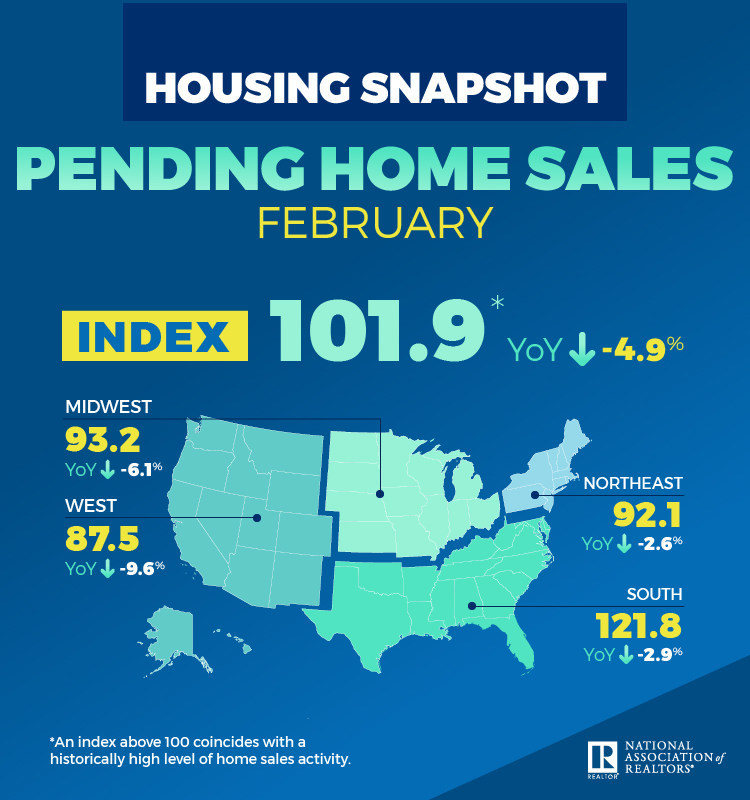Pending home sales suffered a minor drop in February, according to the National Association of Realtors. On a regional basis, the South and West saw a bump in contract activity and the Northeast and Midwest reported slight declines.
The Pending Home Sales Index, a forward-looking indicator based on contract signings, decreased 1.0 percent to 101.9 in February, down from 102.9 in January. Year-over-year contract signings declined 4.9 percent, making this the fourteenth straight month of annual decreases.
Although pending home sales declined in February, in the same time period one month earlier sales reported a solid gain. "In January, pending contracts were up close to 5 percent, so this month's 1 percent drop is not a significant concern," said Lawrence Yun, chief economist at NAR. "As a whole, these numbers indicate that a cyclical low in sales is in the past but activity is not matching the frenzied pace of last spring."
[adbutler zone_id="326324"]
[adbutler zone_id="326327"]
Despite the growth in the West, the region's current sales are well below the sales activity from the same time period one year earlier. "There is a lack of inventory in the West and prices have risen too fast. Job creation in the West is solid, but there is still a desperate need for more home construction," said Yun.
[caption id="attachment_11413" align="alignleft" width="327"] Pending Home Sales for February[/caption]
Pending Home Sales for February[/caption]
There markets with the largest increase in active listings compared with a year ago are as follows: Denver-Aurora-Lakewood, Colo.; Seattle-Tacoma-Bellevue, Wash.; San Diego-Carlsbad, Calif.; Portland-Vancouver-Hillsboro, Ore.-Wash.; and Nashville-Davidson-Murfreesboro-Franklin, Tenn.
Yun doesn’t anticipate any interest rate increases from the Federal Reserve in 2019.
"If there is a change at all, I would say the Fed will lower interest rates in 2019 or 2020. That would stimulate the economy and the housing market," Yun said. "But the expectation is no change at all in the current monetary policy, which will help mortgage rates stay at attractive levels."
Yun expects existing-home sales this year to decrease 0.7 percent to 5.3 million, and the national median existing-home price to increase around 2.7 percent. Looking ahead to 2020, existing sales are forecast to increase 3 percent and home prices are also around 3 percent.
The Pending Home Sales Index in the Northeast declined 0.8 percent to 92.1 in February and is now 2.6 percent below a year ago. In the Midwest, the index fell 7.2 percent to 93.2 in February, 6.1 percent lower than the same time period one year earlier.
Pending home sales in the South inched up 1.7 percent to 121.8 in February, which is 2.9 percent lower compared to this time last year. The index in the West increased 0.5 percent in February to 87.5 and fell 9.6 percent below a year ago.



